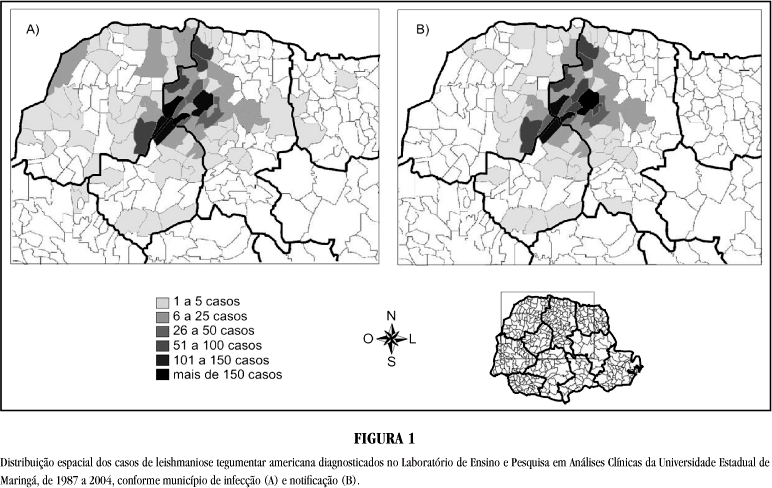Information on the role of population mobility in maintaining American tegumentary leishmaniasis in the State of Paraná is scarce. Population mobility was evaluated as a risk factor for this endemic disease in three mesoregions of Paraná, using data built up at the State University of Maringá, covering 1987 to 2004. A total of 1,933 cases were notified, mostly among migrants (54.4%). The municipalities with the greatest numbers of cases notified were Maringá (358), Doutor Camargo (108) and Terra Boa (105). The rural cases were predominantly autochthonous (89.8%), while the urban cases were mostly among migrants (84.8%) (p < 0.0001). Among the rural autochthonous cases, there was no difference between the sexes (p = 0.127), whereas among the urban migrant cases, men predominated (p < 0.0001). The migrant cases were mostly related to mobility within and between municipalities. Population mobility seems to be an important variable in the epidemiology of this disease in the State of Paraná.
American tegumentary leishmaniasis; Population mobility; State of Paraná


